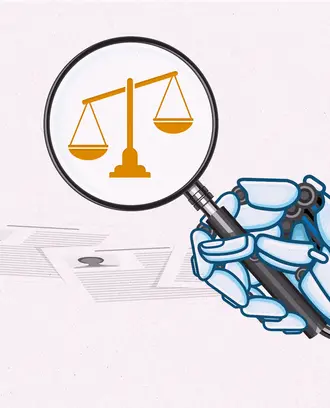Credit: Ian Parker / Unsplash
Whether it’s the Great Resignation or the Great Reshuffling, at the heart of the ongoing labor movement is the reprioritization of work, life, and values for employees — and what organizations can do to support them and encourage retention.
“People want to work for a place that is incredibly purpose-driven, where they feel respected and valued, and where they can do their best work,” said Patreon Chief People Officer Tiffany Stevenson during the 2022 EmTech Next conference hosted by MIT Technology Review. “I think that companies that really spike on purpose and making people feel valued, giving them meaningful work that's going to help them build their portfolio, [their employees are] going to continue to stay.”
Stevenson was one of several speakers who discussed today’s changing workforce and how companies can attract and retain talent. Here's a closer look at some ways Patreon, Levi Strauss & Co., and Coursera are doing that.
“Open source” your culture, and offer opportunities for creativity
At the membership and payments platform Patreon, leadership looks at employee experience through a design perspective and approaches culture as a verb, not a noun, Stevenson said.
“You're thinking about what that employee will see, do, touch, feel, interact with from the moment that they start,” Stevenson said. “We open source everything that you need to know about our culture. You can go on our site, you can pull our culture deck. We want you to know from day one what it is that we do, what's our mission, what do we value and how do we express that.”
Stevenson said she also keeps in mind that employees have a choice in where they work and what they do, so she thinks of work like a soldier mulling another tour of duty: What’s going to make them sign up for the next tour? What will they get in terms of their personal goals and purpose as it relates to the work?
“The more that we do that, the more that we think about that from a design perspective, the better experience that we're going to have and the more creativity we're going to pull from our talent,” Stevenson said. “So it’s a win-win.”
Consider a high-tech bootcamp
A denim clothing company might not seem like a place for artificial intelligence pioneering, but Levi Strauss hasn’t stayed in business for 170 years without some innovation.
“We cannot be a business or a company today without applying technology,” said Katia Walsh, senior vice president and chief strategy and artificial intelligence officer at Levi's.
Because of the high demand for AI and machine learning skills, Levi’s realized it had to grow its own talent. That’s why in 2021 the company launched a machine learning bootcamp for employees across a range of departments, divisions, and locations around the world.
A beginners’ class teaches subjects like modeling, feature engineering, and how to process data. And an advanced course teaches things like natural language processing and neuro-networks. So far more than 160 employees have been trained, with a fourth cohort coming this autumn.
Levi’s gets the benefit of a more diverse set of creators building its algorithms — which helps reduce bias — and while there’s no new title or job for employees after the bootcamp, they do have that training and upskilling in their toolbox.
“What we were probably most successful in teaching in the bootcamp was not so much the latest Python or agile ways of working, but actually igniting a passion for lifelong learning,” Walsh said.
Identify business goals, and articulate a workforce vision
At online course provider Coursera, the importance of continued education is an obvious priority, but it’s only been in the last few years that learning has become a “mission critical need” for corporate leaders, said Coursera’s Chief Enterprise Officer Leah Belsky.
One reason is that companies are dealing with a talent crisis and realizing their employees don’t have the skills they need. Another is that companies are realizing that opportunities for employees to learn and advance careers are one way to get them to stay.
“These two key business goals — one, do I have the talent and the people I need to meet my business goals, and two, can I retain and recruit key people — these are the main reasons why companies are now investing in learning,” Belsky said.
When it comes to best practices for skilling workers, Belsky said the first thing a company can do is start with a workforce vision.
“Companies need to be conscious, not just about putting out big marketplaces of learning, but about identifying what are the skills that we need and the jobs that we need in our company to succeed,” Belsky said.
Then, instead of focusing only on specific skills that are wanted, look at job functions. Leaders should ask themselves what job roles they’ll need in functions like data science, tech, and sales.
“When you start with the vision of what are the future job roles you need, then it becomes a simple process to match jobs to skills to learning,” Belsky said.
Read next: To hire and retain employees, start by revamping your systems



